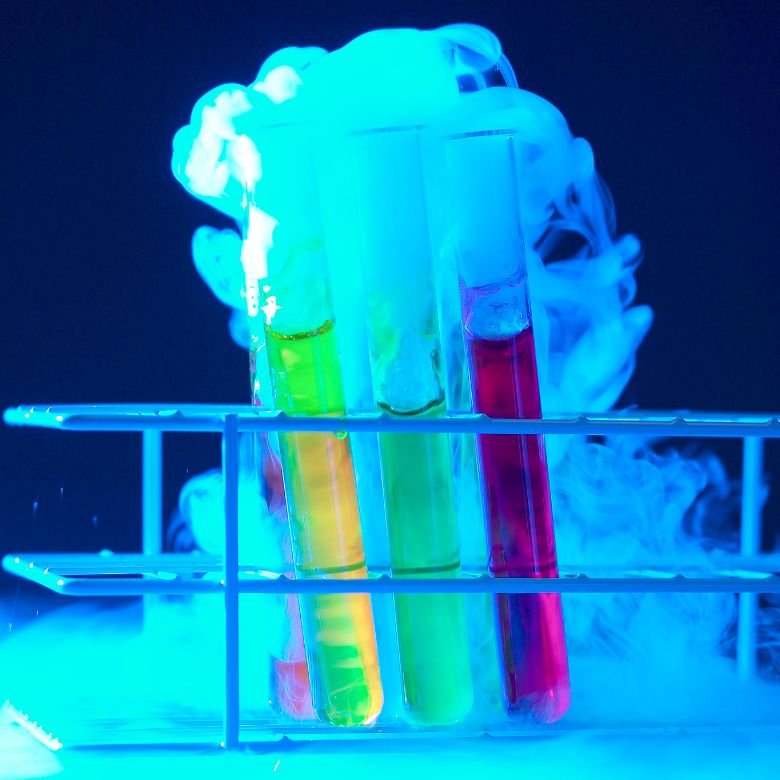The term ‘hydroxides’ refers to the group of non-organic compounds which consist of two solid parts: a cation of metal, for example sodium [Na+], and a hydroxide anion [OH-]. The number of hydroxyl groups existing in the molecule is equal to the valence of the metal, as it itself has the valence –I.

Amphoterism
Amphoterism is a sort of chemical hermaphroditism, which implies that anything which is amphoteric can be associated with the demonstration of features of the opposite side, which in this case means the reaction of a given substance both with acids and with bases. This means that such a hydroxide, when put into the environment of a strong base, will react similarly to an acid. The product of that reaction will be the appropriate salt whose acid radical will come from an amphoteric hydroxide. On the other hand, if the compound is subjected to a reaction in a strongly acidic environment, it will behave like a base. Such a reaction will aim at producing a compound of salt where the cation will be a metal originating from the applied hydroxide.
Examples of amphoteric hydroxides
The most common amphoteric hydroxides are aluminium hydroxide, zinc hydroxide, chromium(III) hydroxide and copper(II) hydroxide. There are, however, many more of them, for example beryllium hydroxide, lead hydroxide or antimony hydroxide. Contrary to the tendency, such compounds are not crystalline. They form colloidal deposits that are very slightly soluble in water.
The reactions of amphoteric hydroxides
Due to their nature, the discussed compounds show reactions both with strong acids and bases. General notation:
- Amphoteric hydroxide + acid → salt + water
- Amphoteric hydroxide + base → hydroxo-complex (salt)
In both cases, the reaction products are salts, but in the reaction with bases they are complexes where the anion also includes a metal that originates from the hydroxide. Example reactions of aluminium hydroxide:
- Al(OH)3 + 3 HCl → AlCl3 + 3H2O
- Al(OH)3 + NaOH → Na[Al(OH)4]
How to recognise whether hydroxides are amphoteric?
The easiest way to locate such compounds in the periodic table is by the relationship between the nature of oxides and their position in the table. The acidic properties of oxides increase from left to right, so especially the first group has tendencies of a base and produces such oxides, and the products of the reaction with water are basic hydroxides. On the extreme right side, except for the precious gases, the period includes certain elements that are oriented to acid oxides. Since oxides, and consequently amphoteric hydroxides, show some of the properties of each of them, we can expect to find them somewhere in the groups located in between. We should indicate that the shares of the basic and acidic features in amphoteric oxides are similar.
Change in the character of oxides in different periods
Beginning with group 1: sodium in reaction with water produces a strong base, while magnesium, located in the next group (2), when reacting with water also produces a basic hydroxide which is, however, not so strong – this proves a slightly higher share of the acidic properties of Mg compared to Na. Another element, from group 13, is aluminium, which shows still different properties: when in contact with water, its oxide produces a hydroxide that is a very weak base, but it also reacts with strong bases in the same mechanism as typical acids. Group 14 includes such elements as silicon, whose oxide only reacts with bases, which means that its acidic properties prevail over the basic properties. To compare, in the compound of oxygen and aluminium, the shares of these properties are very similar, which allows it to modify and adjust its reaction to the current environment. It is similar in groups 15 and 16, where phosphorus, for example, produces acid oxides and shows a very low share of basic properties, while the next element (sulphur) has virtually none of them.

Change in the character of oxides in different groups
The location of an element relative to the group also indicates its electronegativity, which grows along with the declining periods. To give an overview, the non-metallic boron forms an oxide having an acidic character, while aluminium, located underneath, is capable of reacting both towards strong bases and strong acids, and the subsequent elements of gallium, indium and thallium also produce ever-more basic oxides in line with the tendency of the force of metallic character. Thallium oxide (Tl2O) is already completely basic, and its share of acidic properties is negligible in a reaction.
Does electronegativity affect the character of oxygen compounds?
If we take a look at the amphoteric oxides, we will easily notice that the difference in the electronegativity of the elements that they are composed of oscillates around 1.4–2.0, and the shares of the polarised and ionic covalent bonds are similar. In practice, the amphoterism of a compound is determined by the path of electrolytic dissociation, and for such a similar electronegativity between a metal and oxygen as well as for the hydroxyl group bond, we can have two separate paths being analogous to the dissociation of a strong base and acid. This means that, in an acidic environment, they dissociate into a metal cation and OH– anions, and if the environment is basic, then into a metallic anion MOnn- and H3O+ cations.
Does the oxidation state affect the amphoterism?
The dependency between the oxidation state of an element and its character increases towards acidity. This implies that the lower the oxidation state, the higher the element’s tendency to alkalinity. For multivalence substances such as chromium or manganese, it is possible to observe a character oriented in both ways. The manganese, with the possible valences of II, III, IV, V, VI and VII, shows a wide range of shares of properties. The middle valence (IV) suggests amphoterism, lower valences show the basic character, while the higher ones show an increasingly high share of the acidic character. Thus, the manganese oxide at the seventh oxidation state, in reaction with water, will produce quite a strong acid (HMnO4). For a comparison, let’s take a look at the manganese and copper oxides (included in the same group): copper oxide – CuO – located right to manganese, shows a stronger acidic character. However, since manganese tends to change the share of individual properties, at oxidation state III (Mn2O3) its acidity is already close to CuO.
